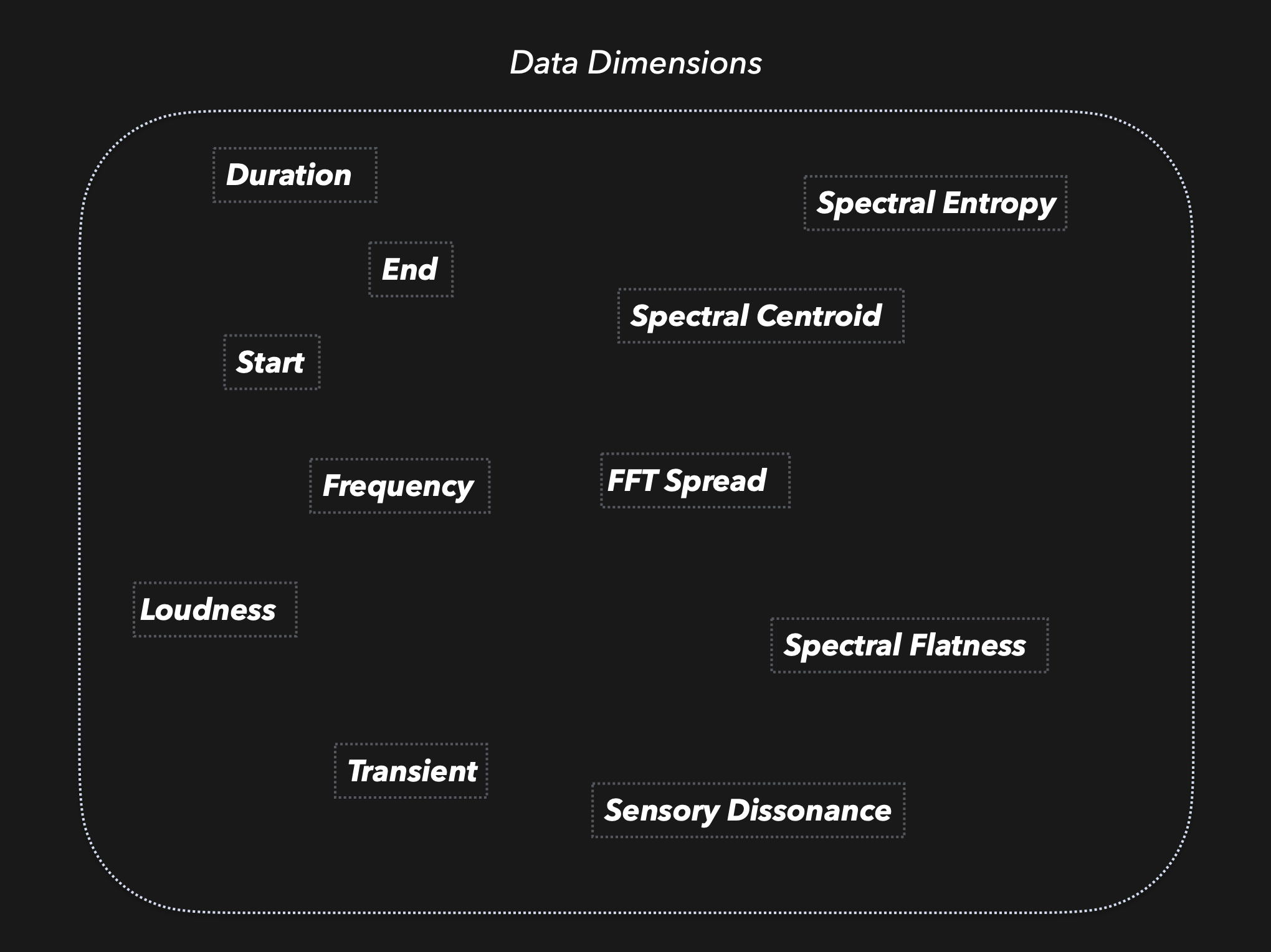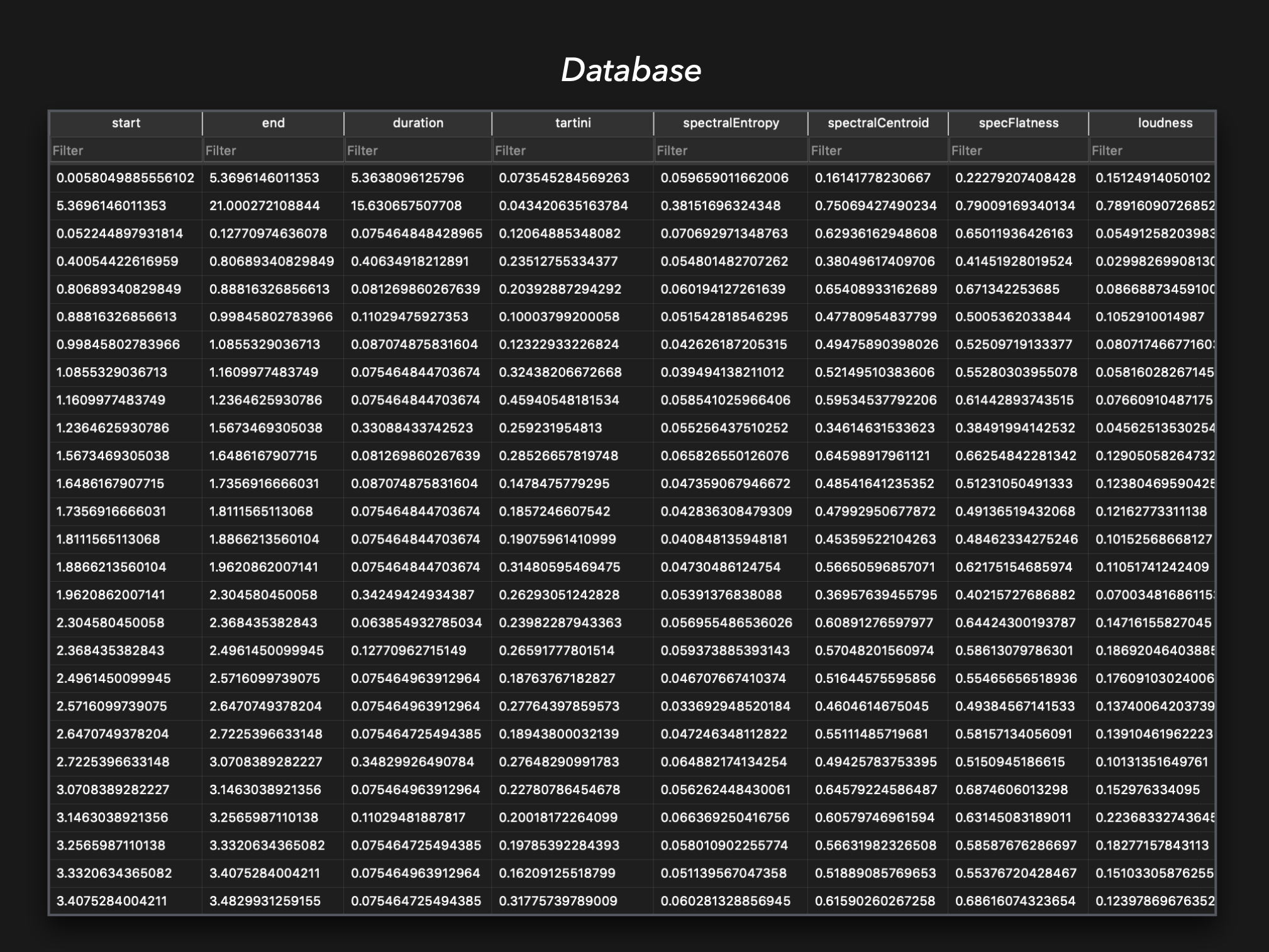Exploratory Analysis
In my work with digital synthesis, I have become interested in using machine-listening approaches where sound processes auto-regulate based on analysis data. While real-time analysis provides valuable insights, relying heavily on those for crucial behaviours can sometimes result in overly smooth and generalised outcomes. This tendency contrasted with my objective then of achieving sharper and more distinctly articulated results. Using the UPIC material, I wanted to analyse more sounds in depth, compare them, and find gaps and unique perspectives that would be harder with real-time approaches. My methodology was significantly influenced by concepts from data science, especially those introduced by John Tukey in his groundbreaking work ‘Exploratory Data Analysis’ (1977). His methodology focuses on discovering the unknown and deeply exploring the inherent qualities of data to build a thorough understanding of a certain dataset under question. His approach emphasises delving into data with curiosity, allowing the data itself to guide the analytical journey and reveal its underlying story.
The UPIC sounds would become my dataset. Could this extensive archive of past sounds serve as a foundational or contextual basis for the development of compositional algorithms? What was interesting about the UPIC archive as a starting point was the strong character of the sound material. Most of the sounds had some sort of pitch movement or otherwise noisier parts. There were very few ‘neutral’ sounds or static textures that would easily combine or melt with similar sounds. There was also a great number of recordings that existed and were organised in the same directory structure as fifteen years before.

